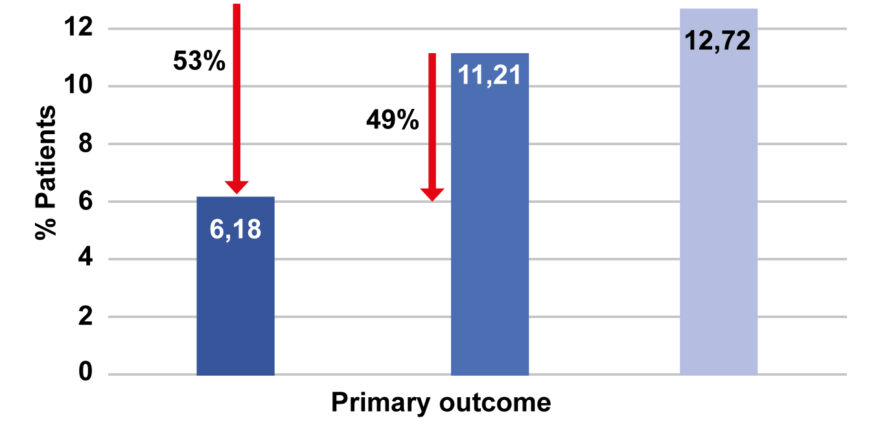Alqahtani S. et al., J Endocrinol Metab. 2022;12(6):161-167, doi: https://doi.org/10.14740/jem848
Vascular disease including venous thromboembolism (VTE) is a common cause of death among patients with comorbid conditions such as diabetes mellitus . VTE results in a range of events from symptomless distal venous thrombus of deep veins to threatening deep venous thrombus and fatal pulmonary embolism. The likelihood of VTE and its associated complications are higher in older patients than younger ones and the risk becomes two-fold with every decade of aging . This risk also varies by the sex of the patients with males being affected more by the second episode than females. The yearly incidence of VTE is between 1.5 and 3.0 cases per 1,000 individuals. The incidence of VTE is even higher among diabetic patients. For example, the data suggest the annual rate of VTE among diabetic patients was 432 per 100,000 population . VTE is considered as the third most common cause of cardiovascular disease following stroke and myocardial infarction . It seems that metformin being an antihyperglycemic drug prevents cardiovascular disease beyond glycemic control. However, despite the effects of metformin on glycemic control, its effects on venous thrombosis may be different. Overall, there is limited evidence supporting such beneficial effects with scarce evidence from well-conducted trials. Few epidemiological studies have shown that hypoglycemic agents such as metformin may have a direct effect on VTE . However, such evidence is not qualitatively synthesized both from observational and intervention studies, thereby limiting our understanding of the role of metformin in preventing VTE. Thus, we carried out a systematic review of the epidemiological studies assessing the role of metformin in preventing VTE. The findings of this review will help clinicians and researchers to plan further studies and make evidence-based clinical and policy decisions to treat the patients appropriately and reduce the burden of VTE and its associated morbidity and mortality.
Methods:
A systematic search of three main electronic databases including Embase, PubMed, and EBSCO was undertaken in 2021. Any study conducted between 2000 and 2021 that addressed the role of metformin in preventing venous thrombosis in patients diagnosed with type 2 diabetes mellitus was considered eligible.
Results:
Following a comprehensive review of the research articles based on the eligibility criteria, six articles were incorporated into the review. The findings of the review demonstrate that metformin was found to be associated with 22% to 58% risk reduction for venous thrombosis among diabetic patients. However, due to the observational studies included in the meta-analysis, the protective effect may not be independent of other risk factors or other variables.
Discussion:
This review was undertaken to summarize the evidence regarding the protective effect of metformin on VTE in diabetic patients. Overall the findings of the review demonstrated a protective effect of metformin among diabetic patients in terms of reducing venous thrombus formation. Though, limited evidence exists and perhaps there is a need to conduct more randomized controlled trials, the available evidence is suggestive of beneficial effects of metformin against VTE. This can be further confirmed by undertaking large intervention studies to endorse the findings. According to the current guidelines of the American Diabetes Association/European Association, metformin should be considered as either as a monotherapy or in combination for patients diagnosed with type 2 diabetes mellitus. This is even more beneficial for patients who are at risk of thrombus formation. Metformin being an insulin sensitizer can improve the function of vessels and related vascular abnormalities with few side effects in patients with type 2 diabetes mellitus . The potential mechanisms by which metformin may prevent venous thrombosis are by inhibiting platelet activation in vivo and in vitro [19]. The evidence suggests that platelets are involved in several biological processes such as clotting, vascular lesions, and activation of other platelets . This activity of platelets is markedly suppressed in the presence of metformin and it is mainly by suppression of platelet prothrombinase activity and by reducing extracellular mitochondrial release . This is consistent with the reduced platelet adhesive function after administering metformin. The animal studies suggest that metformin significantly suppressed aggregation of platelets and prevent both arterial and venous thrombosis in rat models [19]. And thrombus formation deteriorated in the rats treated with metformin . Besides, it has been found that metformin reduces the size and weight of arterial and venous thrombi and subsequently reduces the incidence of pulmonary embolism. Also, metformin reduces markers of endothelial activation such as Von Willebrand factor and it also decreases the inflammation and levels of plasminogen activator inhibitor . These potential mechanisms contribute to the protective effect of metformin in reducing thrombus formation and associated mortality in diabetic patients.
Conclusion and Implications:
for Future Overall, the existing studies included in this review demonstrate that metformin may be found protective against VTE, mainly in diabetic patients. Based on the available findings, metformin may be safely used in diabetic patients at risk of thromboembolism; however, we would recommend conducting more epidemiological studies particularly randomized controlled trials to assess the effect of metformin on VTE before making any definitive conclusions about the same. Considering the limited sample size of this review, more studies and their respective reviews are required to confirm these findings and these studies need to be undertaken both in developing and developed countries to confirm these findings and recommend the use of metformin on a broader scale for the prevention of thromboembolism in diabetic patients.






